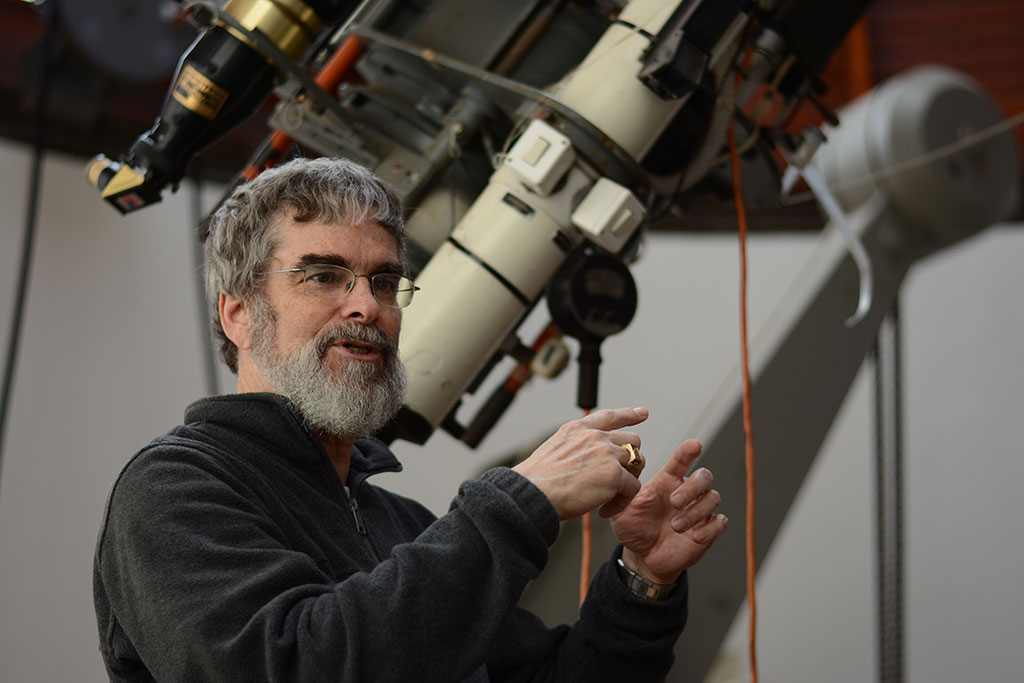An interview with the Director of the Vatican Observatory

Faith and Science in the search for Truth
Trying to “show to the world” that science and faith are mutually supportive is one of the goals of the Specola Vaticana, which throughout the centuries has brought together the most prestigious scientists from various nations, becoming a point of reference, especially for research in the astronomical field. Jesuit Brother Guy J. Consolmagno, Director of the Specola, shares his thoughts.
What does the Specola Vaticana do and why was it created?
The Specola Vaticana has its roots in the reform of the calendar made by Pope Gregory XIII in 1582. It was instituted in its actual form by Pope Leo XIII in 1891, to show to the world that the Church supports science. Today our mission is simply to do “good science’, especially in the field of astronomy and its related fields, working alongside our scientist colleagues throughout the world.
I realize that the people who need to hear this message of the Church’s support of science today, are not our scientist colleagues who know us well and many of whom are people of faith. Rather, we have to reach common Catholics, who may not be aware of the long history of the Church’s support of science.
What is the focus of your current scientific activities?
Our research ranges from mathematics of the Big Bang and the nature of meteor dust. But we also have a dissemination programme for philosophers and theologians. Every two years, we organize a summer course for young scholars and a seminary in Arizona for Catholics involved in ministry and in education. Many of us write books and articles on the themes of astronomy and Catholic faith. In this way, we try to “show to the world” that science and faith are mutually supportive.
To view our annual reports, visit: https://www.vaticanobservatory.va/en/publications/annual-report
Are science and faith in opposition, or can they work together on the theme of astronomy?
As Saint John Paul II said, faith and reason are the two wings that lead us to truth. How could they ever be in opposition? The idea of a conflict comes from those who believe that our science is a perfect description of the truth, or that our faith is already perfectly understood. But this understanding makes both faith and science dead issues, rather than a relationship of love between us and the creator of this universe, which becomes ever more profound and without end.
From a theological point of view, how can we understand the potential presence of intelligent life forms in the universe? What do you think about life on other planets?
Our tradition is filled with the idea that all of creation is in relation with its creator, whether it’s an image of stars that cry out joyfully in the Psalms or the concept of angels, who are clearly different types of beings from us. I would never put a limit to what God can create. The image and likeness of God can be found in our intellect and in our freedom of choice, not in how many tentacle eyes we have!
Can you provide some information on how many scientists work with the Specola and how many structures it has?
The Observatory has 12 full-time scientists, most of whom are Jesuit priests and brothers, all of them pursuing a doctorate in research in universities around the world. Moreover, we have 12 adjunct scholars, Catholic researchers recognized by the Vatican, who have complete access to our structures. They are priests, lay people, men and women, who also come from all over the world.
Our headquarters are located in the Papal Gardens of Castel Gandolfo, where we have a library and a large collection of meteors, as well as our laboratory. In Tucson, we have offices at the University of Arizona, with which we share the management of the modern telescope, Vatican Advanced Technology Telescope, on a mountain in eastern Arizona. Further information on our structures, can be accessed on our website: www.VaticanObservatory.org.





